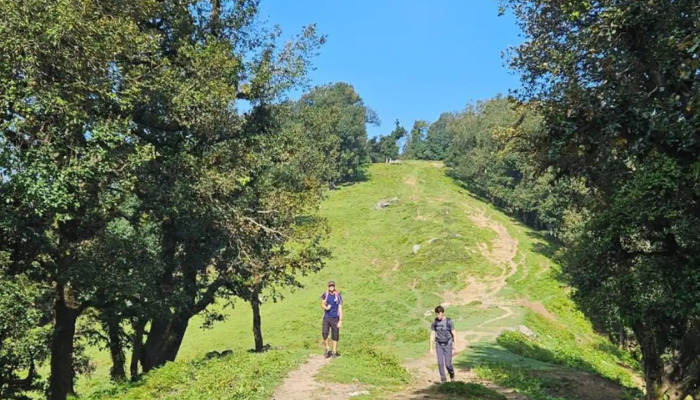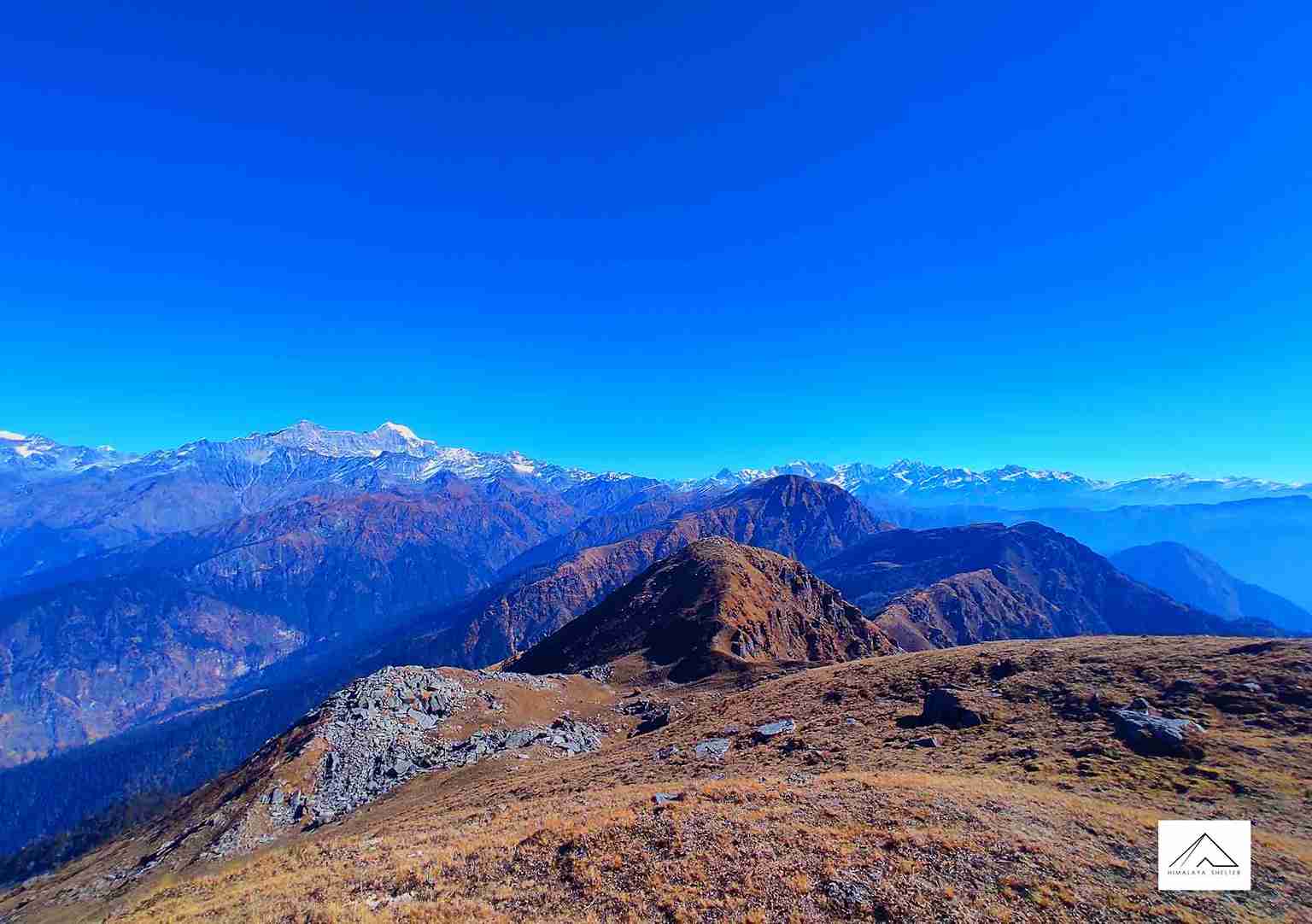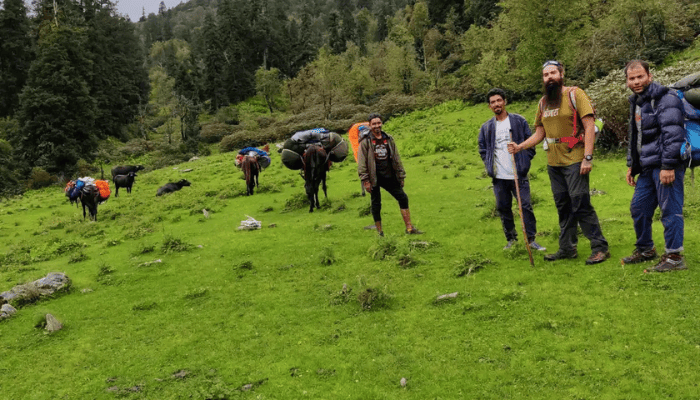
Safety measures during a trek :
Basic First Aid Information that is Important when Going Mountain Climbing. Embarking on a high-altitude trek would be a thrilling opportunity if one follows the cornerstone precautions required for a trek, but it also is a package of various challenges and hardships. The following article will give the reader an idea of what are the pre requisites one should follow before and during the trek. In this post, we will shed light on some of the important aspects like what you should know before going for a high-altitude trek, how to prepare yourself for the high-altitude trek, what all gears do you need for the high-altitude trek, acclimatization techniques, what if case of an emergency and several other important pointers that you should keep in mind when heading for a high-altitude trek.
Physical Preparation
Fitness and Endurance Training
Cardiovascular Fitness: Most likely you would want to take part in cardio exercises such as running, cycling or swimming on a regular basis to be able to develop the fitness needed for those long hours trekking. Cardiovascular exercise for a minimum of 30mins 5x weekly. Other types of exercise that could improve your cardiovascular endurance include; Interval training.

Keep your core, legs and back strong with compound movements such as squat, lunge, and deadlift. Make sure you do strength training at least three times a week to build the strength and endurance of muscles, but beware not to neglect upper body strength exercises like push ups and pull ups as the backpack will strain your shoulders and arms.
Hiking Practice: To be accustom with the conditions, you can make nice practice by walking on tracks with backpack. Take your backpack sometimes with increased weight step by step to have a sense how weighted you will be on the trekking. And make summer or spring time long distance walk practices in order to have experience.
Flexibility and Balance
Yoga and Stretching: Yoga and various stretching exercises can be done to increase flexibility and balance of a player and therefore come up with a lower chance of injury. Some of the yoga asanas are Downward Dog Pose, Warrior Poses, and Tree Pose. Pre or Post workouts or hiking we use stretch to reduce any chances of muscle pull and increase on muscle recovery time.
Acclimatization Understanding Altitude Sickness Symptoms
Headaches, nausea, dizziness, fatigue or shortness of breath should indicate that one has to stop and rest in order to avoid the worst. These early signs if detected can help one avoid serious altitude sickness. The signs and symptoms of serious circumstances such as HAPE and HACE include confusion, difficulty in walking and a chronic cough.
Prevention: Go up step by step for your body to adapt itself to the new heights. Make sure you do not climb more than 300-500 vertical meters in a day once you are above the 3,000-meter level-a recommendation known as the ‘climb high, sleep low’ rule. It is recommended to spend a few days at some intermediate altitude before going even higher. Drinking plenty of water and do not consume alcohol that could worsen the condition of the dehydrated body. Acclimatization Schedule
Rest Days: It is important that you incorporate some rest during your trekking for example, you should consider taking some days without trekking to enable time to accommodate the altitude. These days should be taken to gently move or do some slight exercise as well as take short walks in order to acclimatise.
Hydration and Nutrition
Drink enough water and also ensure that you maintain a balanced diet for your body to undergo the process of acclimatization. Take up to six small meals a day, each meal must be rich in carbohydrates, this is so they would be easy to digest and the energy would be readily available.
Essential Gear

Clothing Layering System:
Layering is suggested as the management of body temperature. Divide into base layers that pull away moisture, next layers thinking about insulation like fleece or down, and last layers that are waterproof and windproof. Select fabrics that do not take long to dry and that insulate without having to overly thicken the fabric.
Footwear: Make sure you use the best quality and perfectly fitting trekking boots with good support to the ankles. Wear them before the trek to allow your shoes to adjust to your feet eliminated blister formation. Look for a waterproof boot that has a breathable membrane so that your feet do not sweat while your feet are wet.
Equipment
Backpack: Appropriate and comfortable backpack to carry gears along with enough space for multi-days treks, 30–50-liter volume. Consider the following points such as: soft and spongy like straps, inclusion of a belt that goes round the waist, and multiple pockets.
Sleeping Bag: Select a sleeping bag that will be adequate for the environmental conditions in terms of temperature. Finally, down sleeping bags are light in weight, exceptionally warm, comfortable and do not absorb moisture. Your sleeping bag should also be lightweight but at the same time should be able to accommodate you well.
Trekking Poles: These may help in minimizing the stress on the knees, and provide better support when you are in terrain with a bad surface. Folding is said to be more convenient especially in areas with different terrains and can be dismantled when not required.
Navigation and Safety

Maps and GPS:
It is advised to take along precise maps of the area where you plan to trek and a GPS or a smartphone with the maps preloaded in addition to the regular marked maps. Decide on map reading skills on topographic maps as well as using a compass as an additional tool.
First Aid Kit:
This should comprise of things such as bandages, wipes that have antiseptic, pain relievers, blister treatments and persons particular medication. Things like a space blanket, scissors, and a whistle are other essentials that should be taken in the car.
Communication Devices:
So, it can be a necessity to have a satellite phone or even two-way radio when getting lost in the region that has no signal in the mobile terminals. Check on your communication equipment to ascertain that they have battery charge to the full or better have extra batteries and power banks.
Nutrition and Hydration
High-Energy Foods:
Carry along snack which are light but rich in energy, for instance; fruits, nuts, chocolate, energy bars among others. These give a quick energy boost and they do not have to be eaten with a plate and fork and knife.
Balanced Meals:
Make sure that you are eating a little of carbohydrate foods, proteins and fats in order to maintain energy through the day. Discuss here dehydrated meals, the type of food that can be packed in a bag, and are quite easy to prepare when required.
Water Purification:
Bring a filter or a couple of purification tablets for water if you want to be sure in water quality. Categorized by type, the advantages of portable water filters such as the Sawyer Mini or Steripen are lightweight and portable.
Hydration Packs:
Hydration bladder having a drinking tube lets a person to drink while using his or her hands at work. It is recommended to have minimum 3-4 liters of water per day and more, if the climate is hot.
Weather Awareness & Forecasts
Make sure to monitor weather changes especially for the area you are planning to trek before the event and while at it. Websites like Mountain-Forecast. Based on values analyzed at com, particular peaks are expected to be projected at an enhanced degree of detailed.
Understanding Weather Patterns: It is also important to know average weather and certain signs of bad weather. Formation of clouds and cold downdrafts followed by different types of wind movements are some of the signs of an upcoming storm.
Dealing with Weather Changes
Layering:
Modify the number of white or light-coloured clothing items worn based on temperature regulation and to avoid getting wet. Pack your waterproof and windproof layers optimistically in your backpack so that they are easy to access.
Shelter:
Be able to construct emergency shelters within the shortest time when there is change in the weather condition. Climb and descend to learn how to pitch your tent or tarp so that it feasible under sneaker weather.
Real-Life Scenario:
While on a trekking expedition in the Himalayas a group of trekkers were attacked by a snow storm. Their precautions ranged from having layered clothing, to knowing how to set up emergency shelters that would ensure they waited out the storm till it was safe to proceed.
Emergency Procedures Emergency Contacts
Local Authorities:
This is important, especially when one is joining an already running shift , have the contact information of the rescue services and authorities on hand. Optimal to grasp how to ask for assistance in the remote regions.
Emergency Evacuation Plans:
That way we are in a position to do the following: Know the nearest evacuation points and routes. If helicopter evac is available learn the procedural requirements.
Emergency Care and First Aider CPR and Basic First Aid
Make sure that you and your family members have basic understanding of cpr and other first aid measures for minor and major emergencies. Sign up for a wilderness first aid course for certified first aid training.
Altitude Sickness Treatment:
Be familiar with the operating of drugs, such as acetazolamide (Diamox) and knowing when to go down to a lower altitude. It is always advisable that you carry a simple version of a first aid guide for quick lookup of ailments.
Group Safety Measures During a Trek
Buddy System
Trekking in Pairs: It helps to always go for hiking with one other person. The buddy system also makes sure that help will be near when there is an accident that may happen. Develop habit of mutual checking, particularly if a person starts to become weary or is affected by mountain sickness.
Regular Check-ins:
Remind each other frequently of the conditions of the high altitude, and if anyone is showing symptoms of altitude sickness. It is advisable to practice assigning a few minutes for a stand-up meeting at every halt so that you can highly recommend the overall wellbeing of the group and regulate the next part of the hike.
Group Dynamics:
Pace Management:
Should ensure that the speed you set, is one that the slowest member of the group can cope with. This particular makes sure that everyone stays together and prevents the situation where one has to run and get left behind.
Decision-Making:
Make decisions together with everyone in mind and this include their health as well as their safety. Overall, people should have a specific communication plan and decide on who or what function takes the lead when a decision has to be made.
Motivation Tips:
As a means of encouraging proper behaviours, positive reinforcement accompanied by encouragement should be implemented.
This means that one should set quantifiable and measurable work targets that are easy to achieve so that morale is not likely to dip.
Ensure that all the group members are heard and express positive things to create a good atmosphere.
Conclusion
Trekking at higher altitudes comes with its many …benefits but is also a very delicate activity that calls for much preparation and following of the right safety procedures. The common dangers can include poor health and fitness, lack of adjustment to conditions, inadequate equipment, food and water, weather conditions, and proper evacuation procedures, and group protection – all that, when recognized, can make your trip more enjoyable and memorable. It is important for you always to take safety into consideration whenever you are on a trekking adventure.
About Author

Himalaya Shelter
Recent news

07 Jan 2026

06 Jan 2026

03 Jan 2026

